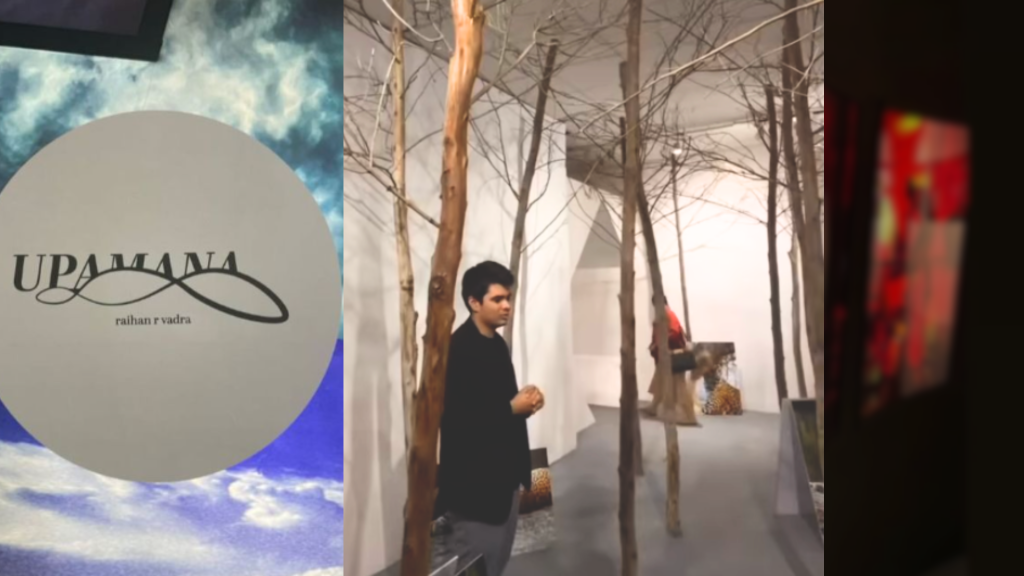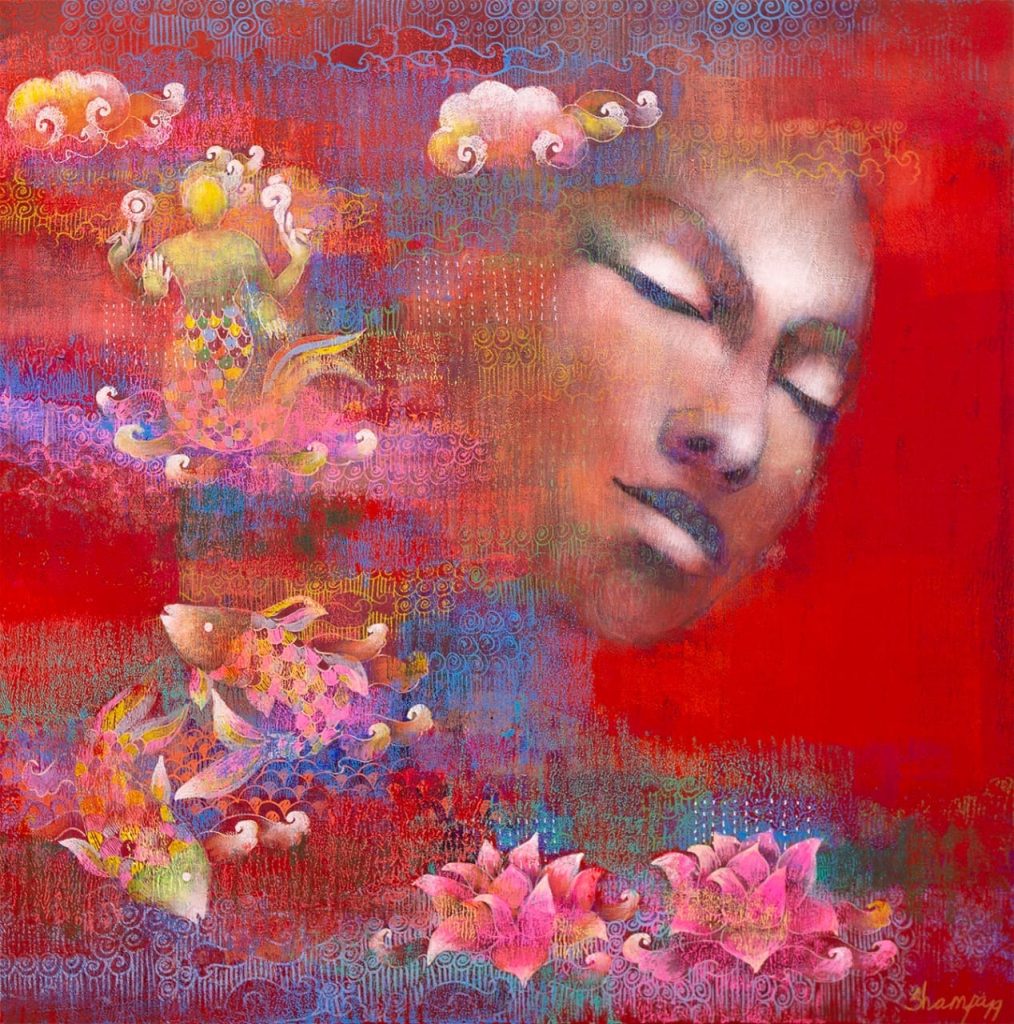Raihan Rajiv Vadra, a visual artist from New Delhi has defiantly risen to become a contender in the arena of immersive art exhibitions. The third show in a series of five as mesmerising as all the others, his latest exhibition “Upamana” explores the nature and method of knowledge acquisition and its connection to human existence. The series goes beyond the association of art into the worlds, where an onlooker is introduced to his or her active participation in a frame fashioned by immersive setting that differs from what we regard as sterile white cube-gallery.
Raihan’s immersive art adventure began in 2021 with his inaugural solo exhibition, “Dark Perception,” which explored the limitless horizons of imagination and challenged conventional conceptions influenced by time, space, and light. The immersive exhibits provided an engrossing investigation into human thought processes and the malleability of reality perception. ‘Anumana: An Evocation of Choice,’ Raihan’s second solo show in December 2022, expanded upon this basis by exploring the philosophical idea of inference. This exhibition invited spectators to consider the complex relationship between abstract concepts and the decisions that impact our lives by skilfully tying philosophical reasoning with the important issue of choice.
Now, with ‘Upamana,’ Raihan extends an invitation at Bikaner House New Delhi to fully engage in an introspective journey. The show goes beyond the conventional art-viewing experience, asking viewers to consider the meaning of their own existence in addition to the nature of the artworks. The Sanskrit word “Upamana,” which means “example” or “relativity” is the main focus. In Indian philosophy, ‘Upamana’ refers to the process of learning by analogy or comparison.
In one area of the exhibition space, temporal comparison is the main focus. There is a sense of continuity and cyclicality created by the walls’ delicate wave-like texture. This graphic depiction of time, represented by a loop, echoes the recurrent motif in the series logo. The looped walls are covered in mostly green photographs, with two exceptions that are prominently displayed in bright red. This dramatic contrast highlights the point where one exists fleetingly inside the time cycle.
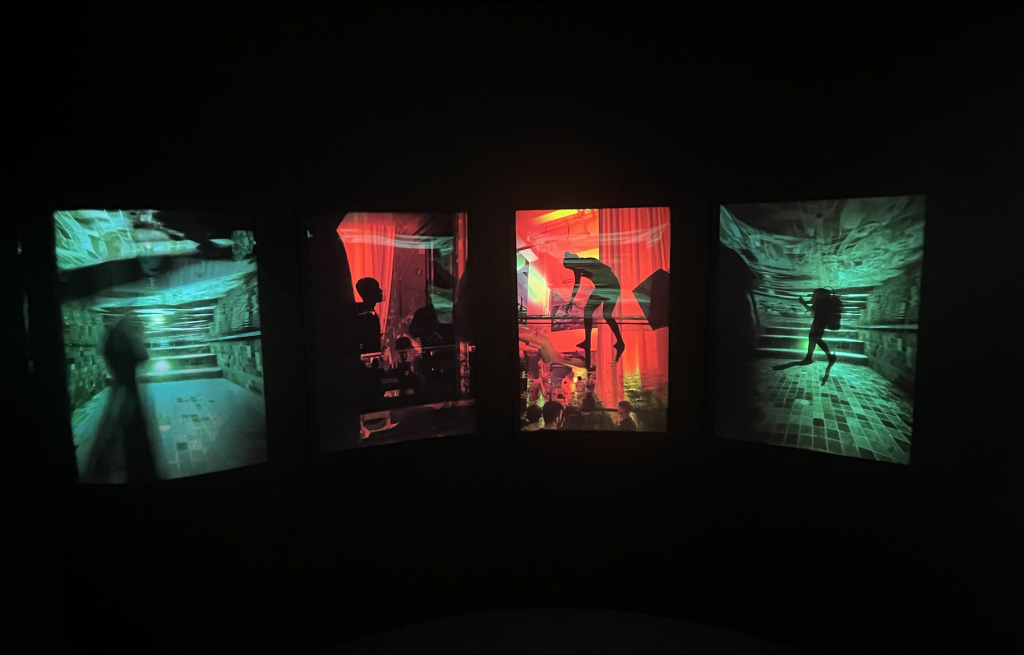
Symbolised by “the Eyes,” the usage of an iconic motif in Raihan’s installations digs into the complex interpersonal domain in addition to temporal elements. This sign, which stands for other people’s unceasing stare, adds a voyeuristic touch that highlights the constant scrutiny people are subjected to. Anxiety is a common feeling, and The Eyes, symbolising a watchful and judgmental presence, add to it. They define you. The very essence of this worry is intricately interwoven with human life, implying that ongoing scrutiny and judgement from others are essential components of the human condition. The passage effectively illustrates the complicated dynamics that exist within the interpersonal realm by conveying the idea that uneasiness arising from an ever-present external gaze intrudes upon personal boundaries and develops a permanent disquiet within individuals.
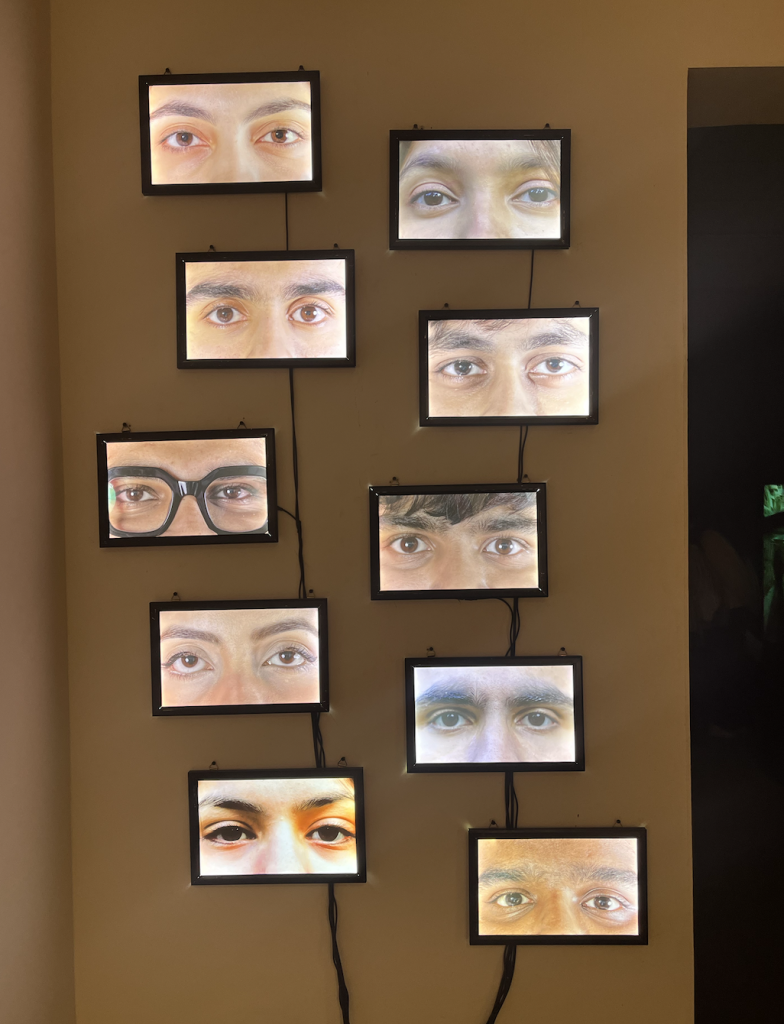
A section of the show that features mirrors placed so as to reflect the viewer offers more insight into how one perceives oneself. But the mirrors have a misleading effect, warping one’s actual reflection. The viewer’s self-perception is put to the test by the juxtaposition of many mirrors, which echoes the erratic and subjective nature of self-image.
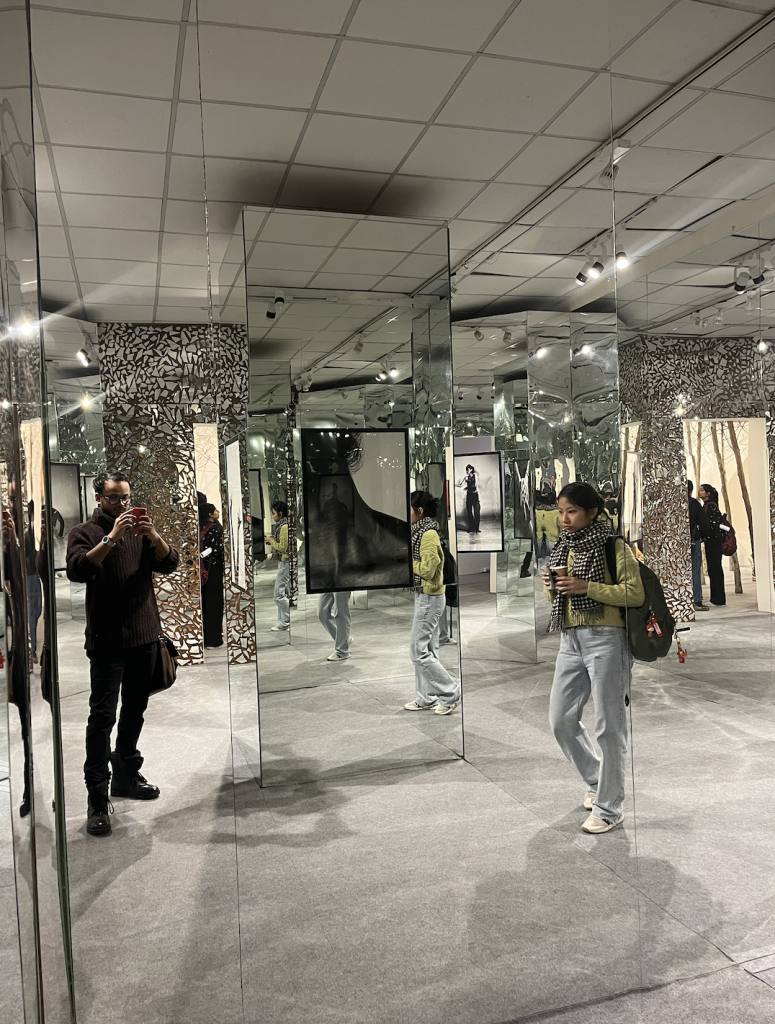
The display also presents a moving contrast between nature and humanity. Installed across the area, actual trees serve as mute witnesses to the struggle of people to define themselves. These trees, unlike humans, do not have to perform the difficult act of comparison in order to develop their sense of self. Thinking on the innate relationship between the natural world and human existence is prompted by this juxtaposition.
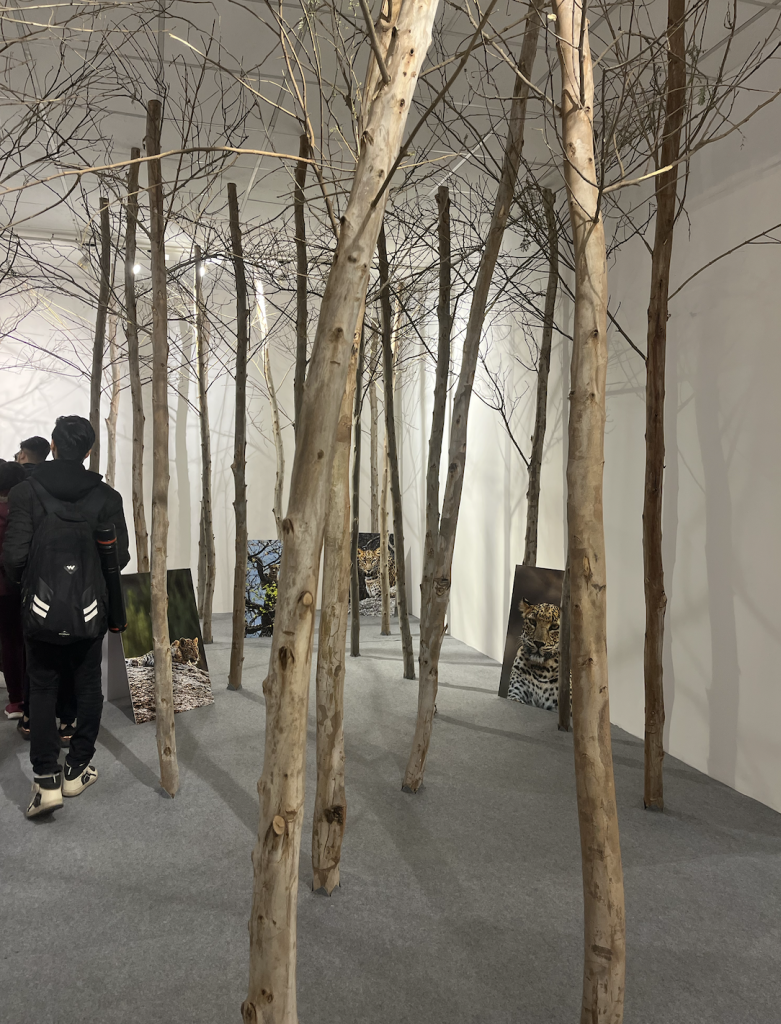
As the exhibition unfolds visitors are asked to think about the ramifications of living in a world without comparisons. Will these parallels endure, or will they vanish with death? Raihan presents the idea of rebirth as a blank canvas, unencumbered by Upamana’s constraints. This thought-provoking idea prompts reflection on the never-ending cycle of life and raises issues regarding the nature of identity and the never-ending search for self-awareness.
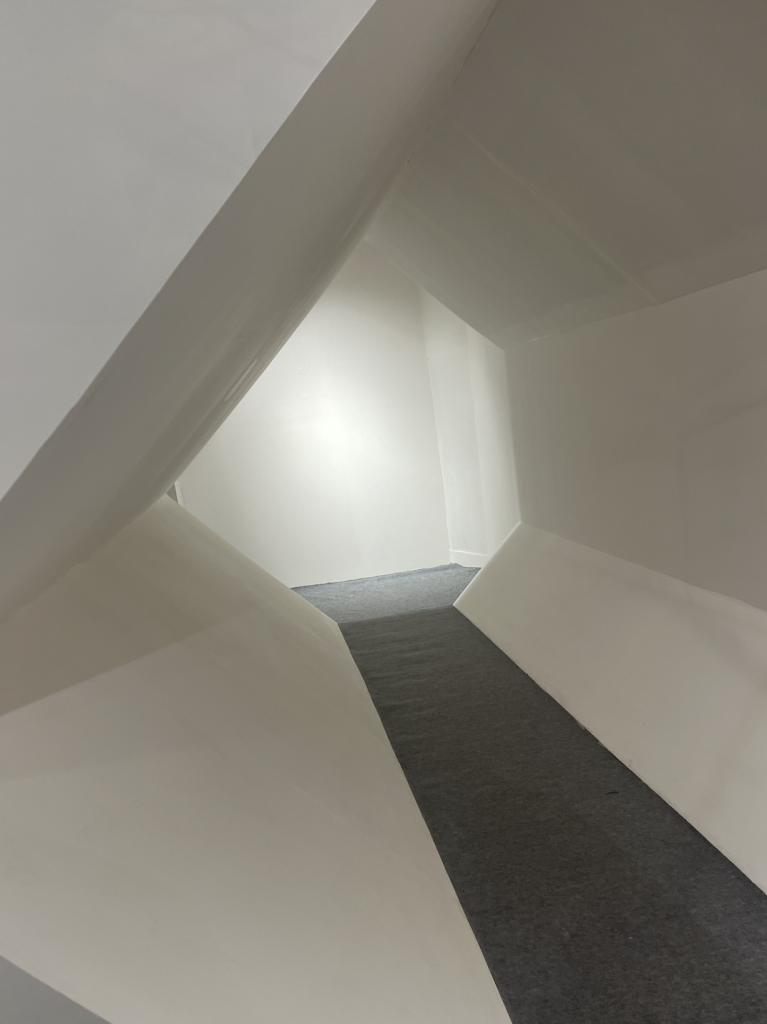
Raihan takes an approach that is characterised by truthfulness, in contrast to shows that tread the waters of Postmodern Chaos. Although there is initially a sense of ambiguity due to the lack of a curatorial comment or detailed artwork descriptions, this enigma is intentional. Viewers uncover the core of Raihan’s artistic concept by following the strategically positioned hints throughout the display.
What also distinguishes Raihan’s work is his propensity for collaboration with various art forms, evident in his past exhibitions and once again in the current showcase. Notably, the infusion of Desi Hip Hop (DHH) music, especially in the preview, extends a welcoming hand to non-traditional art enthusiasts, making the exhibition accessible to a diverse audience.
“Upamana” by Raihan is a comprehensive examination of the human condition that goes beyond the confines of conventional art displays. In addition to delighting the senses, the immersive installations force the audience to ponder more deeply about the nature of the Self, the knowledge, and the complex web of comparisons that shapes our life. Raihan invites the viewers to join him in deciphering the secrets of consciousness and identity as his artistic journey continues to unfold.
The exhibition is open till 4 feb’2024 at Bikaner House New Delhi
First Take 2021 Jury: Metaphor in motion with the sculptures of KS Radhakrishnan

Iftikar Ahmed is a New Delhi-based art writer & researcher.

